#story resources
Text
For those interested: Joe Murray, creator of Rocko's Modern Life and Camp Lazlo, has released his 2010 book "Creating Animated Cartoons with Character: A Guide to Developing and Producing Your Own Series for TV, Web or Film" as a FREE eBook download on his website! It can be found here: https://joemurraystudio.com/books-by-joe-murray/
It is a straight download - no info input required, Murray simply asks you make a donation to a food bank or otherwise pay it forward. This book is since out of print and sells for astronomical prices online so for people (especially like me!) interested in animated TV development this is an AMAZING resource!
Here is the full page blurb for the download copied directly from Murray's site:
This book is one creators approach to creating and producing an animated series. Packed with details and lessons learned from producing Rocko’s Modern Life and Camp Lazlo, along with many side anecdotes.
Also included are interviews with the late Stephen Hillenburg (Spongebob) Craig McCracken ( Powerpuff girls) Tom Kenny ( voice of Spongebob and Heffer), and many more professionals discussing their craft.
The book has since gone out of print, and many resellers are taking advantage of a wanting audience by selling copies at an immense profit. I have received many letters from those who cannot afford these prices and feel they could benefit from the information here. Even though some of the streaming and broadcast information are a bit out of date,( and Lets Go Luna is not included here) much of the info is still relevant.
So I am offering a digital copy for you as a free download. As payment, maybe you can donate to a food bank, or simply pay it forward somehow.
I am working on a new book about story and character for animation. We will see how it goes.
I hope this book can be of service to you. Enjoy!
#joe murray#rocko's modern life#camp lazlo#artist resources#animation resources#story resources#character design resources#artists on tumblr#cartoon#cartoonist#animation#character design
46 notes
·
View notes
Text
I’m actually serious about this, if at all possible, right now is a very good time to request queer books from your local library. Whether they get them or not is not in your control, but it is so important to show that there is a desire for queer books. I will also say getting more queer books in libraries and supporting queer authors are pretty fantastic byproducts of any action.
This isn’t something everyone can do, but please do see if you are one of the people who has the privilege to engage in this form of activism, and if you are, leverage that privilege for all you’re worth.
For anyone who can’t think of a queer book to request, here is a little list of some queer books that I think are underrated and might not be in circulation even at larger libraries:
Refusing Compulsory Sexuality: A Black Asexual Lens on Our Sex-Obsessed Culture by Sherronda J. Brown
Silver Under Nightfall by Rin Chupeco
Harvard's Secret Court: The Savage 1920 Purge of Campus Homosexuals by William Wright
The Perks of Loving a Wallflower by Erica Ridley
God Themselves by Jae Nichelle
IRL by Tommy Pico
The Pink Line: Journeys Across the World's Queer Frontiers by Mark Gevisser
Passing Strange by Ellen Klages
The New Queer Conscience by Adam Eli
Fierce Femmes and Notorious Liars: A Dangerous Trans Girl's Confabulous Memoir by Kai Cheng Thom
Queering the Tarot by Cassandra Snow
Wash Day Diaries by Jamila Rowser
Queer Magic: Lgbt+ Spirituality and Culture from Around the World by Tomás Prower
Before We Were Trans: A New History of Gender by Kit Heyam
Beyond the Pale by Elana Dykewomon
Hi Honey, I'm Homo! by Matt Baume
The Deep by Rivers Solomon
Homie: Poems by Danez Smith
The Secret Life of Church Ladies by Deesha Philyaw
The Companion by E.E. Ottoman
Kapaemahu by Dean Hamer, Joe Wilson, Hinaleimoana Wong-Kalu
Sacrament of Bodies by Romeo Oriogun
Witching Moon by Poppy Woods
Tell Me I'm Worthless by Alison Rumfitt
Dead Collections by Isaac Fellman
Disintegrate/Dissociate by Arielle Twist
Dear Senthuran: A Black Spirit Memoir by Akwaeke Emezi
Peaches and Honey by Imogen Markwell-Tweed
Nepantla: An Anthology Dedicated to Queer Poets of Color by Christopher Soto
#queer books#queer history#lgbt history#honestly#libraries are a massive resource in terms of preserving and uplifting marginalized narratives#and as a community#that has been so very excluded from both fictional and nonfictional narratives#this is a great way to reclaim and care for the stories that have been surpressed for so long
11K notes
·
View notes
Text
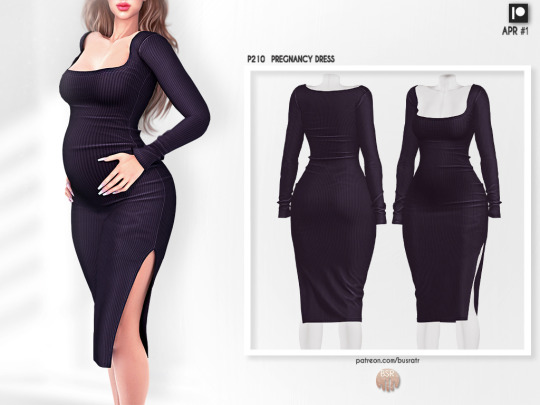
PREGNANCY DRESS P210 (APR #1)
20 Opitons
_________
Adult-Elder-Teen-Young Adult
For Female
————–
Compatible with HQ mod-
New Mesh
All Lods
Custom thumbnail
Early Access ( Avaible 20.07.2024)
Includes Blend File as option
**-Please do not re upload or claim as yours feel free to re color but do not include the mesh .

DOWNLOAD PATREON
I hope you like them. ♥
💖 You can check out my Patreon for special cc and other early access content. 💖
#the sims 4#the sims 4 custom content#the sims 4 custom content finds#busra-tr#ts4 cc finds#ts4#the sims resource#ts4 cc download#the sims#ts4 cc free#the sims 4 cc#the sims 4 screenshots#the sims 4 cas#the sims 4 download#sims 4#ts4 simblr#ts4 screenshots#my sims#ts4 gameplay#ts4 legacy#ts4cc#the sims community#patreon#ea#3d#3d mesh#the sims 4 hq#simblr#simstagram#the sims story
2K notes
·
View notes
Text
Feelings Wheel
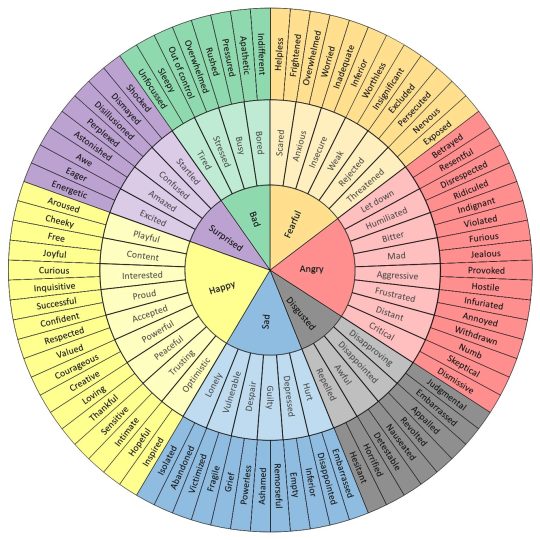
This is the feelings wheel by Geoffrey Roberts, shown to me by my therapist. My initial thought was, "what amazing synonyms to use for diverse emotional vocabulary!"
More than that, this wheel is great for understanding your characters inner motivations and reactions to situations. For example, if a character constantly feels helpless, then their overarching characteristics will be that they are fearful.
Characters who are less emotionally aware may use words and act in the inner most circle. Those much more aware of their emotions may describe themselves or express and use words from the outer most circle.
Hopefully you guys find this as helpful as I did! Let me know down in the comments.
Happy Writing!
#creative writing#character development#emotional growth#emotional intelligence#novel writing#story writing#tumblr writers#writing community#writer things#writing advice#writing tips#writing resources
8K notes
·
View notes
Text

#motaz azaiza#motaz instagram stories#palestine#gaza#endisraelsgenocide#end israeli destruction#i stand with palestine 🇵🇸#free gaza#free palestine 🇵🇸#gaza strip#free palestine#gazaunderattack#palestine resources#israeli terrorism#israel is a terrorist state#israel is committing genocide
934 notes
·
View notes
Text

𓈒ིུ ✿˖ 𓈒ིུ ✿˖ 𓈒ིུ ✿˖ 𓈒ིུ ✿˖ 𓈒ིུ ✿˖ 𓈒ིུ ✿˖ 𓈒ིུ ✿˖
1. AquilineTwo ㅤㅤㅤㅤㅤ ㅤㅤㅤㅤㅤㅤㅤ2. Byron
3. Essays 4. RomanAntique-Italic
5. RomanAntique 6. OldNewsPaperTypes
#𝗉𝗎𝖽𝗋𝗂𝖽𝖺 𝗇𝖾𝗐 𝗉𝗈𝗌𝗍 : ✿#𝓐́𝓷𝓰𝓮𝓵 𝓢𝓲𝓷 𝓒𝓲𝓮𝓵𝓸 ㅤ❤︎ㅤ(𝟤𝖮𝖮𝟦)ㅤㅤㅤㅤㅤ#𓈒ིུ ✿˖ 𓈒ིུ ✿˖ 𓈒ིུ ✿˖#⠀⠀⠀⠀⠀⠀⠀⠀⠀⠀⠀⠀⠀⠀⠀⠀⠀⠀⠀⠀⠀⠀⠀⠀⠀⠀⠀⠀⠀⠀⠀⠀⠀⠀⠀⠀⠀⠀⠀⠀⠀⠀#active rp#free fonts#rp resources#carrd resources#edit resources#phonto#ig story#ig edit#ig stan#kpop rp#rp theme#fakeland
778 notes
·
View notes
Text
how to write convincing dialogue
did you know that show, not tell applies to dialogue, too? while dialogue can be used to further your narrative, it can also be used to showcase your characters. here's how:
-what is your character hiding? most people don't say things at face value. they hide what they mean within their words and tone, but in writing, you can't verbally hear the character's tone. ways to convey non-verbal tone include: contradictions between words and actions, context behind the words (ie. the scenario, character's actions and feelings), syntax (ie. fragments, repetition, awkward phrasing). also consider who the character is hiding information from: is it the reader? the characters? both?
-favorite words or phrases. does your character use a certain phrase or word a lot? do they often put their prepositions at the beginning or the end of the sentence? these are questions to ask when you're arranging the syntax of the dialogue. everyone has a specific way of talking. make sure you give each character a distinguishable voice.
-personality. this is how you can create a distinguishable voice. is your character confident? are they shy or hesitant? do they repeat the phases of others because they have nothing to add to the conversation? are they confrontational or do they beat around the bush? ask questions like these. if your character is confident, they may make bold statements and appear sure of themselves unlike shy characters who use words such as "maybe" or "should" or "think." to boil it down, think active wordage versus passive.
-observe others. don't look solely at television or other books. sit at your local coffee shop and listen in on conversations, then try and break it down. are they hiding anything? do they frequently use any words or phrases? how would you describe their personality? the better you get at breaking down conversations, the better you can create convincing ones, whether shallow, deep, or as a narrative device, because even if you use your dialogue to move your narrative along, it should still be compulsively convincing.
one way to tell if you've ticked all these boxes is if you can tell who is speaking without any tags.
happy writing! if you have any questions about how to implement any of these tips, our ask box is always open.
#writers on tumblr#writing#writeblr#dialogue#writing tips#writing advice#writers of tumblr#writing help#writing resources#nanowrimo#novel writing#story writing#screenplay#creative writing#writers#writing tools#write it#books and novels#fiction
8K notes
·
View notes
Text
Some Vital Scenes to Include in a Romantic Subplot, pt. 1
I’ve been in the plotting stages of a novel I’ve been working on for some time now. It’s not a romance novel, per se, but the romantic aspect is very prevalent… dare I say important. Anyway, so as I was working on my scenes and character arcs, I began to realize that I didn’t have enough fleshed-out about romantic arc, nor deepened the protagonist’s love interest or their connection, for that matter. This led me to devise up some scenes that I felt were crucial to the story if I wanted to keep this romantic angle to it, and now that I’ve most of them arranged, I find now that I’m way more excited about my characters’ love story.
These tips will be unnumbered because, obviously, the sequence of these events and how they will fall into your storyline will probably be different. Also, you don’t have to use only one scene for every suggestion that will be mentioned, as you can have multiple scenes of flirtations or deep conversations, for example. They usually blend all together into the narrative at this point. Just remember that there should be some relevance to the plot at hand in some of these scenes as to not derail completely from the main narrative or other conflicts.
I was going to post this all at once, but decided it was too long and wanted to split it into two parts to go more in-depth and for easy reading. /-\ Enjoy ~
- The meet-cute, or the meet-ugly:
Ah, yes, the first encounter. Or, as we sometimes like to call it: the meet-cute, or the meet-ugly if you’re feeling a little unconventional or perhaps mischievous. Though we may enjoy setting up our star-crossed characters in a whole range of moments from awkward to swoon-worthy, the initial meeting is what’s important (if your characters haven't already met before the beginning of the story, ofc, but this is useful to have in mind). Let us quickly define the two:
Meet-Cute: A charming and serendipitous first encounter between the characters in question that sets a positive, memorable, and oftentimes romantic tone.
Meet-Ugly: An unconventional, awkward, or disastrous initial meeting that adds a unique twist to the start of the romantic connection, often leading to unexpected chemistry and an added intrigue on whether or not they’ll get together.
You don’t have to nail your characters’ first encounter into a label or bubble such as these two examples, but I like bringing these up for a general idea.
- Bouts of flirting and/or banter:
Just as the title suggests, these are scenes containing the flirtaious communication between the two characters. These kinds of interactions will, of course, develop over time and deepen the bond or relationship. Playful interactions, gazes, and witty exchanges between the characters can create a lighthearted and flirtatious atmosphere that hints at their growing attraction.
The way they might flirt or tease can reveal their personalities. For example, one character might be more sarcastic, while the other responds with quick wit, or quiet bashfulness. There’s an element of subtlety, as flirting lets the characters express their romantic interest without explicitly stating it (unless one of your characters lacks subtlety in general and prefers to shout their undying love from the rooftops, which would make for an interesting dynamic, but I’m only spit-balling).
Banter, teasing, and romantic tension underscoring heated debates or loathsome gazes suit just as nicely, especially if you’re writing with enemies-to-lovers or rivalry tropes in mind. But be careful! A little goes a long way: too much all at once can repel any growth for the characters or narrative.
- Initial conflict or struggle:
Depending on your story’s big-picture conflict, the introduction of challenges or obstacles can create tension between the characters, adding depth to their relationship and making their eventual connection all the more satisfying. This might include cultural or class differences, opposing goals or values, history of past heartbreak, personality weaknesses such as stubbornness, or external pressures that threaten to keep the characters apart. Even a nosy family or a disapproving mother can be considered. How the characters navigate and resolve these conflicts contributes significantly to the overall emotional impact of the romance subplot, as well as allowing for some exploration of each character's strengths, weaknesses, and resilience.
- Shared vulnerability:
This kind of scene involves the characters opening up to each other about their innermost fears, insecurities, past trauma, or personal struggles. Shared vulnerability goes beyond surface-level interactions. It involves characters revealing their authentic selves, exposing their emotional vulnerabilities, and allowing the other person to see them in an honest — and sometimes new — light.
This is a symbolic gesture of commitment we’re talking about, here… something that requires trust. As characters share their fears or past traumas, they are entrusting the other person with sensitive information, fostering a sense of trust and emotional intimacy. It might be scary, it could be out from left field, but they will end up learning something new about themselves, their situation, or about the other person, and thus deepen their connection, little by little.
#writing advice#creative writing#fiction#writing#writing tips#character#on writing#story tips#story conflict#writing process#writer stuff#writer#writeblr#writing help#how to write#writing resources#writing tips and tricks#writers on tumblr#writers and poets#writerscommunity#subplot#romance#writing romance#writing characters
686 notes
·
View notes
Text
I really do fail to understand how people are able to justify this genocide at all even after 'claiming' to know the narratives of both the sides?
How can you remain neutral in face of mass murder?
All that privilege must be real nice. Getting to sleep in your beds, safe from this living hell, while justifying genocide must be real nice. Shame on you! Shame on you! Shame on you!
And I'm sorry to the Palestinians. I'm sorry the world's humanity is conditional. I'm sorry that we have failed you.
#palestine#free palestine#genocide#someone literally argued with me about being blinded by Palestine's side of the story because I'm too emotionally invested#and I provided verified resources to support whatever I had posted#I literally did math and supported it with verified data to prove the quarter of a nuclear bomb claim#and I was enfuriated by the lack of empathy#I really am sorry that we have failed you#I am sorry that you have to prove everything even when you are the victim here#I'm sorry I cannot do more#auroras thoughts#free gaza#gaza strip#gazaunderattack#save gaza
1K notes
·
View notes
Text
𝗂𝗇𝗌𝗍𝖺𝗀𝗋𝖺𝗆 𝗌𝗍𝗈𝗋𝗒 𝗂𝖽𝖾𝖺𝗌
1. ⡴⠞ 🦪
2. ✿ 綺麗
3. ெㅤ *
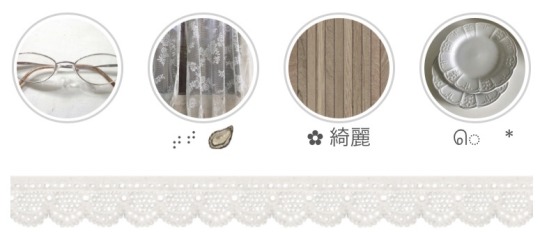



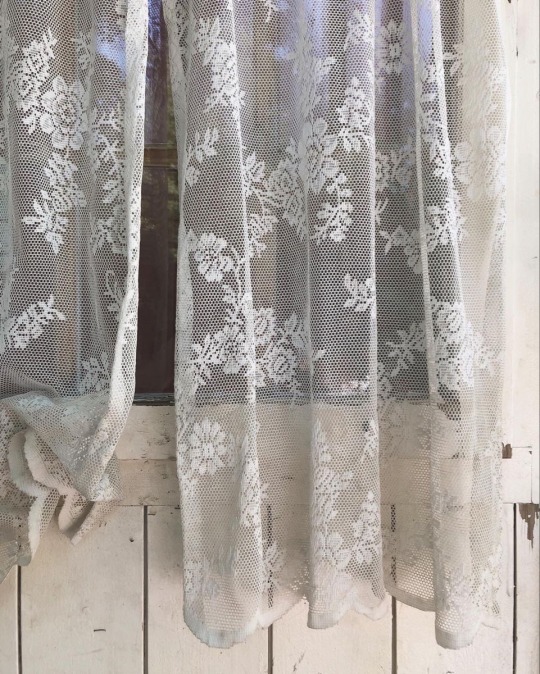

#messy aesthetic#aesthetic#colours#messy moodboard#messy layouts#messy icons#messy bios#messy locs#soft moodboard#aesthetic board#aesthetic icons#instagram#instagram story#instagram bios#bio ideas#bio locs#bio layout#layout icons#layout ideas#symbols#symbol pack#twitter layouts#carrd resources#carrd moodboard#carrd stuff#carrd symbols#kpop icons
418 notes
·
View notes
Note
What are some good ways to write about winter?
Winter. is a season of stark contrasts and sensory experiences. It provides the perfect canvas to paint vivid scenes that range from cosy romances to horror-filled stormy nights.
When writing about winter, it’s essential to capture the essence of its chill and the way it can transform the world. Here are some quick tips!
Sights
A blanket of pristine snow covering the landscape
Bare tree branches coated with frost
Delicate snowflakes drifting from the grey sky
Icicles hanging like crystal daggers from rooftops
Colourful clothes stark against the white of snow
Sunlight reflecting off the snow, creating a blinding glare
Animal tracks stamped into the powder
Frozen lakes and puddles
Man-made objects like snowmen and snow angels
Lights shining against dark backdrops
Sounds
Snow muffling and dampening the usual noises
Boots crunching on the frozen ground
People laughing and shouting as they play
Wind howling through barren branches
Ice cracking underfoot or on distant lakes
The silence of a snow-covered world
Shovels scraping against sidewalks
Snowballs hitting their targets with soft thuds
Branches creaking, laden with snow
The rustle of animals keeping warm in burrows
Smells
The fresh, clean scent of snow in the air
Wood smoke curling from chimneys
The earthy aroma of damp wool from coats and gloves
The sharp tang of frost and cold metal
Hot chocolate and marshmallows
Pine needles and the subtle scent of evergreen
Baking spices from holiday treats
The slight ozone smell before a snowstorm
Wet dog from snowball fights with furry friends
Leather and polish from well-worn boots
Activities
Building snow forts and castles
Ice skating on a frozen pond or rink
Snowshoeing through a silent forest
Curling up by the fire with a good book
Skiing and snowboarding down powdery slopes
Brisk walks to enjoy the winter air
Hiking up snowy mountains for panoramic views
Having snowball fights with friends or family
Feeding birds or wildlife braving the cold
Decorating the home with festive lights and ornaments
Character body language
Shivering and huddling for warmth
Rubbing hands together or blowing on them for heat
Shoulders hunched against the biting wind
Slipping and steadying oneself on icy patches
Squinting against the bright snow glare
Snuggling into oversized coats and scarves
Stamping feet to restore circulation
Clapping hands to keep the cold at bay
Arms wrapped around the torso for warmth
Quick, brisk movements to minimise exposure to the cold
Positive descriptions
The serene beauty of a snow-covered meadow at dawn
The invigorating feeling of cold air filling your lungs
The cosiness of a warm blanket on a frosty night
The joy of catching snowflakes on your tongue
The camaraderie of coming together to shovel snow
The nostalgia of winter holidays and traditions
The satisfaction of making the perfect snowball
The wonder of ice patterns on windows
The laughter and excitement of a snow day
The glistening of a frosted evergreen in the sun
Negative descriptions
The biting sting of the wind against exposed skin
The numbness of fingers and toes in the cold
The dreariness of shortened, grey days
The inconvenience of navigating slushy streets
The isolation of a blizzard keeping everyone indoors
The discomfort of wet socks and snow in your boots
The hazard of black ice on sidewalks and roads
The burden of heavy layers and winter gear
The dull ache of a cold that lingers
The gloom that can accompany the lack of sunlight
Helpful adjectives
Biting, chilly, frosty, glacial, icy
Crisp, brisk, sharp, piercing, raw
Fluffy, powdery, crunchy, slick, slippery
Dreary, overcast, bleak, sombre, grey
Cosy, snug, warm, toasty, plush
Twinkling, sparkling, shimmering, glistening
Silent, muffled, still, hushed, quiet
Fresh, clean, invigorating, brisk, bracing
Nostalgic, traditional, joyous, festive, celebratory
Isolating, inconvenient, burdensome, hazardous, gloomy
#writing tips#writing advice#writers#creative writing#writing#writing community#writers of tumblr#creative writers#writing inspiration#writeblr#writerblr#writing help#writing resources#writers block#writblr#writers corner#let's write#story inspiration#beat writers block#writing asks#tips for writers#help for writers#helping writers#writers on tumblr#writers and poets#writing blog#writer's block#writer#resources for writers#writing reference
493 notes
·
View notes
Text
A Bare Bones Guide to Outlining a Fantasy Novel in Three Acts
If you're trying to write a fantasy novel and you're feeling overwhelmed by the process, try to break down your story into three acts as follows...
Act 1
Introduce the status quo - setting, main character, and any struggles they currently face
Create an inciting incident
Show your character's hesitancy to welcome change
Have your character take a chance and start their journey
Act 2
Introduce friends and mentors
Include trials and obstacles
Let your character have a mini success
Have your character doubt themselves regardless of their success
Act 3
Increase tension with more obstacles and rising action
The climactic high point - a.k.a. the final showdown
Show the aftermath and what your character has overcome/sacrificed in order to succeed
#creative writing#writing resources#writing advice#writing tips#writing community#how to write#novel writing#fiction writing#fantasy writing#book writing#story writing
1K notes
·
View notes
Note
How do I accurately include diversity, and not make it look like I’m just putting it in there for the sake of it?
Writing Diverse Characters - Things to Remember
Honestly, there's no definitive answer to this.
Your characters are people with clear goals, desires and a role to play in the plot. As long as they aren't just sitting there with little else but their race/gender/disability, etc. as their ONLY personality trait, at least you're on the right path.
As for representing a diverse character realistically, here are some things you can consider to get started.
Do's
RESEARCH. There are plenty of blogs/YT vids/websites that exist to help you! Meet people!
Get beta readers.
It doesn't have to be explicit. Racial identities become quite clear early on through the setting, name, and initial description(hair, eye/skin color, body shape, etc) without having to drum it into the readers each time. Gender diversity can be conveyed through the use of certain pronouns without awkward declarations.
Character first, diversity second. Please don't intentionally create a diverse character and then think about how you can push them into the cast. Have a working character, who happens to belong to a particular group.
Read works that have represented a group well. There are plenty of non-fiction works, movies and documentaries that capture the lives of people around the world with a good eye.
Use the correct terms/language
Include different types of diversity
Don'ts
Race/gender/diability is NOT a personality trait. Please. Telling me that you have a Korean girl tells me next to nothing about the character herself.
Using sterotypes. Now, it's all right if your character has a few sterotypical traits, but definitely not if sterotypes are the only thing they have.
Diversity is not a "shock factor". Suddenly revealing that a character is actually gay and has been in the closet all this time as a refresher so that it draws readers' attention? Not a good idea.
One diverse character does all. This can often be seen in female characters of slightly dated works where one woman will play the role of supportive mother, sister, femme fetale and sexy Barbie at the same time. Don't write a diverse character who basically does everything a diverse character can possibly be. All that it proves is that the writer is lazy.
Things I personally hate seeing:
Weird pronunciation of languages. As a Korean person, I always get turned off by works (mostly badly written fanfics, yes, I read those...) that try to transfer Korean dialogue directly onto the page without even checking for the correct way to spell them out. A similar example would be pinyin for Mandarin. Please, this makes the character sound stupid throughout...
Character sticking out almost painfully. If your character isn't from the region but have lived in it for a long time, what reason do they have not to blend in?
Relying on variety shows/dramas as reference. Media representation of diverse characters that are meant for entertainment is not the best source for authentic research. I die every time someone lists a number of Korean rom-coms they've watched for "research". IT DOES NOT COUNT.
As a last note, remember that there's no limit to the kind of characters a writer can writer. Accept that our job as writers is to step into other people's heads, not seeing things from one (our) perspective - and it is not going to be easy.
Hope this helps :)
#writers block#writing#writers and poets#creative writing#writers on tumblr#helping writers#let's write#creative writers#poets and writers#resources for writers#writerscommunity#writeblr#short story#fiction#writing practice#writing prompt#writing inspiration#writing advice#on writing#writing tips#writing community#writer#writers of tumblr#writers community#writers life#writer things#writing problems#writing process#writing questions
236 notes
·
View notes
Text
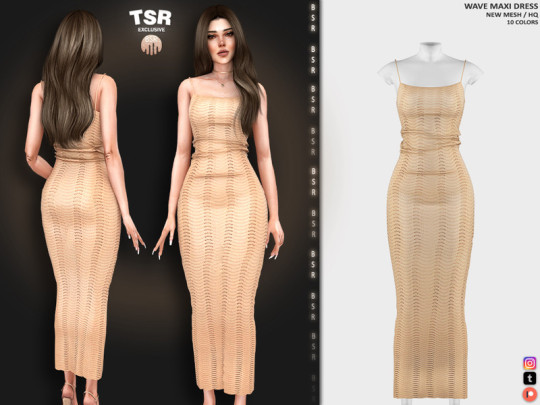
🖤WAVE MAXI DRESS BD1235 🖤
10 Colors
Adult-Elder-Teen-Young Adult
For Female
Compatible with HQ mod-
-New Mesh
-All Lods
- Custom thumbnail
**-Please do not re upload or claim as yours feel free to re color but do not include the mesh .
DOWNLOAD DRESS
I hope you like them. ♥
💖 You can check out my Patreon for special cc and other early access content. 💖
#the sims 4#the sims 4 custom content#the sims 4 custom content finds#busra-tr#ts4 cc finds#ts4#the sims resource#ts4 cc download#the sims#ts4 cc free#the sims 4 cc#the sims 4 screenshots#the sims 4 cas#the sims 4 download#sims 4#sims#simblr#ts4 simblr#ts4 c#ts4 cc#ts4 seasons#ts4 cas#ts4 house#ts4 gameplay#ts4 legacy#ts4 screenshots#ts4 story#the sims community#the sims 4 alpha cc#alpha cc finds
511 notes
·
View notes
Text
Writing about body pain
Body pain happens all the time in real life. When writing your story, you want to bring your characters to life. By creating characters and an environment that is immersive and realistic (as possible), it helps your readers relate to your characters. This is a quick guide to body pain, that is especially useful for all those adventures your characters will be going on. No one survives a dragon attack or war without some kind of injury. At the very least, some muscle soreness.
3 stages of healing:
1st stage: Acute This is the start of the process after getting hurt. Depending on the severity, often lasts up to a week. Characteristics: severe pain, inflammation/swelling, dark bruises (red, black and blue), muscle weakness, muscle spasms, reduced range of motion.
2nd stage: Sub-Acute This is when your body is starting to heal the tissue by creating scar tissue to replace or repair damage. Can last several weeks Characteristics: reduced swelling, bruises are clearing (yellow, green, brown), range of motion is starting to improve,less pain than before.
3rd stage: Chronic This is the final stage of the healing process. It can last months, if not years. Your body is finally adapting to the changes. Pain is no longer associated with the injury, but instead how the body healed. Characteristics: no bruising, little to no swelling, mature scar tissue (usually tough, and harder to move than other tissue), pain is more of an ache, not sharp. If not taking care of, mature scar tissue can cause muscle tension and reduced range of motion. Pain mostly comes on at the end range of a movement, or with stretching.
Visceral Pain:
Visceral pain is organ pain. When one of your organs are causing problems, or are in pain, it typically feels more like a dull pain, or a pressure. The pain is usually vague, so it’s hard to tell where it’s coming from. Thankfully, visceral pain usually follows typical pain patterns, and you can easily find charts online. Example: Lung and diaphragm pain is usually around your neck and shoulders.
Nerve pain:
Nerve pain happens when the nerve is being pinched, compressed or was directly injured. Characteristics: shooting, tingling, zaps, numbness, stabbing or burning. Numbness is not like an analgesic. It can be a reduced sensory feelings, meaning you may not feel it if someone touches that part, but it can be very painful. Nerve pain will follow the length of the nerve.
Bone and joint pain:
These pains are directly associated with a trauma. Pain is localized to the specific bone or joint. Characteristics: Usually described as a sharp pain, especially with movements involving the painful area.
Muscle Pain:
Muscle pain is extensive. Muscles work hard to protect your body while injured. Muscles will tense when the body is in pain, which usually results in more problems. This pain can be caused by overuse, injury, emotional and physical stress, or compensation for other injuries. Characteristics: deep steady aches, sharp, shooting pain, soreness, burning in muscles, spasms. Muscles will have two main problems if not injured: tension and trigger points. Trigger Points (aka knots) happen in very tense muscles. Trigger points follows specific patterns in each muscle. Example: a trigger point in the upper traps muscle is felt in the head, neck and shoulders. Pains and tensions like these can often be the cause of headaches.
Pain priority:
Your brain processes pain in a specific way. Most often, your brain is so busy running everything, when it comes to experiencing pain, it can’t do it all at once. Thankfully. This means, if you have pain in your neck, your back, and your feet, there will usually only be one as the most painful while the others are background pain. The worst pain will usually be associated with your activities, and which part of your body you’re using the most. When getting rid of one of these pains, the next most painful one will be most noticeable. Have you ever had pain on one side of your body, then had it fixed with physio or a massage, then all of a sudden you notice pain somewhere else? It may not be new, it’s just that your body wasn’t focusing on that problem.
Let me know if this was useful to you, or if you have any questions or comments.
Please let me know if something I wrote is wrong.
Follow for more writing tips :)
Happy Writing!
#creative writing#writing advice#writeblr#writerscommunity#novel writing#story writing#writing#tumblr writers#fictional characters#writing community#female writers#writer#writing resources#writing reference
5K notes
·
View notes
Text
100 different locations
abandoned house
airport
alleyway
amusment park
antique store
apartment
aquarium
art gallery
art studio
auto repair shop
bakery
ballroom
bar
bathroom
beach
bedroom
book store
bridge
bus
by a bonfire
cabin
cafe
car
casino
castle
cave
city
closet
club
coffee shop
concert
courthouse
crime scene
dentist
diner
dressing room
elevator
farm
festival
field
fire escape
fire station
flower shop
foreign country
forest
funeral
garden
gas station
graveyard
greenhouse
grocery store
harbor
haunted house
hedge maze
hospital
hotel
ice cream shop
island
kitchen
lab
lake
library
mall
market
mine
mountain
museum
music store
ocean
office
orchard
park
parking lot
photoshoot
pier
place of worship
plane
playground
police station
pool
resturant
river
road
rooftop
school
sex shop
ship
small town
spa
sports game
spy agency head quarters
tattoo parlour
tent
thrift store
train
treehouse
university
vet clinic
waterfall
wedding
#location#locations#setting prompts#writer resources#writing inspiration#romantic writing#writing prompts#story prompt#scene prompt#scene prompts#romantic prompts#scene settings#story prompts#writeblr#fic resources#writing reference#smut prompts#writing ideas#prompt list#creative writing#romance prompts#writing inspo#writing community#writer prompts#otp prompts#romance writing#dialogue prompts#imagine your otp#romance prompts writing
409 notes
·
View notes